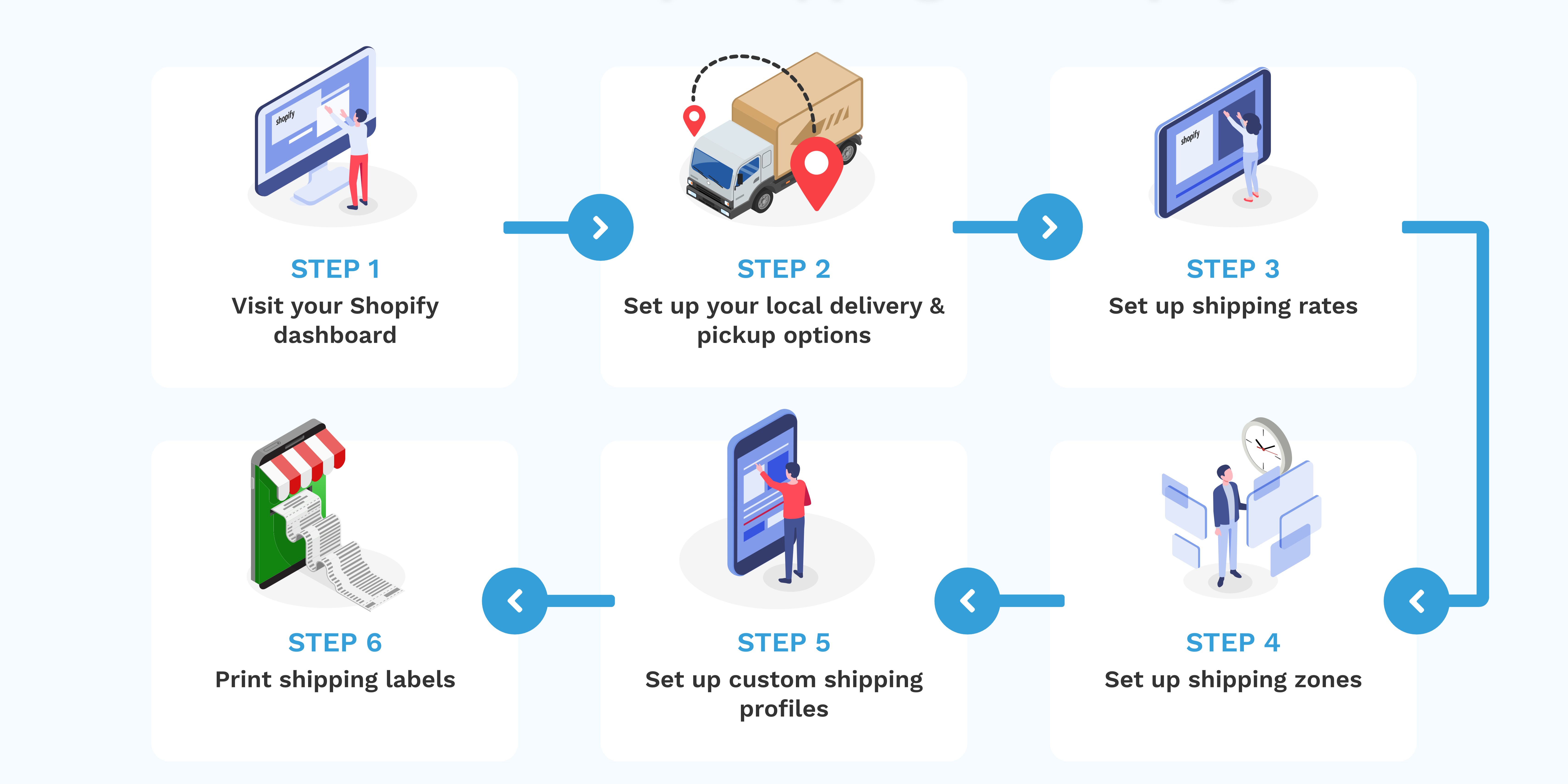Shopify is an online store creation and management platform for enterprises. Without taking a lot of technical expertise, it offers marketers a range of tools and a simple user experience to help them launch and manage their internet enterprises
Table of Contents
Store Creation:
It’s an amazing idea to develop a platform that lets people quickly and easily make their own online businesses with changeable themes and templates. You should take the following into account in order to make these stores have strong SEO (Search Engine Optimization):
- Mobile-Friendliness:- Make sure that the styles and templates are responsive and mobile-friendly. Mobile-friendly websites score higher in Google’s search results.
- Speed of Page Loading:- Make the website as fast-loading as needed. Users are more inclined to spend time with a website that loads quickly, and Google takes page speed into account when ranking pages.
- URLs that are friendly to search engines:- Allow consumers to add relevant phrases to tailor their store URLs. Make sure URLs are clear, short, and contain appropriate search phrases.
- Titles and Meta Tags:- Give users the option to change the meta descriptions and title tags for their store items. This makes it easier for the search engines to learn the content and intent of every page.
- Image Improved:- Enable users to optimize images by reducing them without compromising quality. Enhance search engine comprehension and accessibility by adding useful alt text to your photographs.

Product Management :
The process of arranging, making, and refining a product or a range of products during the course of its life is known as “product management.” This process entails a range of actions intended to guarantee the product’s profitability and feasibility while matching the needs and likes of the target market. A critical role in traditional as well as electronic company environments is product management. A few crucial facets of product management are as follows:
Market Research of shopify :
In order to understand customer demands, industry trends, and situations of competition, product managers undertake out market research. The product design and features have been influenced in part by this information.
Item Planning:
Product managers draft a detailed plan that describes the objectives, consumer demographics, features, and schedule for making the product. The product
Feature Prioritization:
Product managers select features according to their impact on the success of the product and the resources at hand, including feedback from players such as customers, engineers, and marketing teams.
Product Development:
Product managers work together with development teams to give them the knowledge and direction they need to create the product. To make sure the product achieves its objectives, they interact closely with designers, developers, and other stakeholders.
Performance Monitoring:
Using key indicators of performance (KPIs) like sales numbers, user engagement, and customer happiness, product managers monitor the performance of their items after they are created. The product strategy is improved and data-driven decisions are made with the help of that information.
Payment Processing:
The platform supports various payment gateways, allowing businesses to accept payments from customers using credit cards, PayPal, and other methods.
Webpage Speed:
Make sure the pages where you process payments load quickly. Google counts page speed as a ranking a component, and a speedier website delivers an increased user experience.
To speed up their own website loading, reduce the overall amount of HTTP requests, optimize pictures, and employ clever coding solutions.
Tuning for Mobile:
Make sure your payment processing sites are portable, given how many people are using them more and more. Mobile optimization is essential for SEO, as Google promotes mobile-first indexing.
HTTPS Secure Connection on shopify:
Google likes websites that are secure. Make sure that HTTPS is used on your payment processing sites to offer a secure connection. By performing this, you might boost your SEO and create client trust.
Markup for Structured Data:
Use schema.org is or other structured data markup to give search engines more details about your money processing pages. By carrying out this, you may improve your sites’ visibility in search results and possibly raise click-through rates.
Enhanced Metadata:
Create captivating and well-optimized meta descriptions and names for your payment pages. Although meta tags may not directly affect ranking, they do have an impact on rates of clicks from search engine results pages.
Order Management

Shopify offers capacity for processing consumer transactions, keeping track of inventory, and managing orders.
Ordered Information:
Place the structured data markup to use by giving search engines more details about your products and services, costs, and availability. This may improve the way that searches for your products show up.
Explicit Product Descriptions:
Develop engaging and lucid summaries of products. This not only makes your products quicker for customers to understand, but it also gives search engines something useful to index.
Better Photographs:
Make sure your product pics are optimized for the web and use high-quality ones. Improved SEO can be achieved by using alt text and appropriate titles for picture files.
User Perspectives:
Encourage and showcase consumer feedback on your business’s web pages. In addition to fostering belief among prospective clients, user-generated content has optimizing for search engines benefits.
Speed at which pages load:
Make your website as fast-loading as feasible. Website speed affects Google’s ranking, and a quick website improves user experience.
Marketing and SEO
The platform has options to help companies in search engine optimizing their online stores (SEO). Additionally, it offers a number of marketing techniques, including social network integration, email marketing, and discount codes.
Research on Keywords:
Perform thorough keyword studies to find large-scale, pertinent keywords associated with your items. Make use of these keywords in the meta tags, descriptions, and titles of your products.
Product Pages that are optimized:
Ensure that every product page is search engine optimized. This entails utilizing catchy meta descriptions, keyword-rich content, including original, compelling product titles.
Marketing using Content:
On your store on Shopify, start a blog and post useful and pertinent content on a regular basis. Blog entries can showcase expertise, target new keywords, and draw in organic visitors.
Internal Connection:
Construct a strong internal linking network for your website. This enhances user experience and aids search engines in interpreting the hierarchy of your material.
Reviews and ratings from users:
Support and highlight user reviews and ratings on your company’s web pages. Positive comments can raise the reputation of your store and possibly affect search engine results.
Integration of Social Media:
Integrate your shop on Shopify with your network profiles. Engage in active conversation with the people you follow on social media and promote product sharing. SEO may be indirectly impacted by social signals.
Email Promotion:
Make capitalize on Shopify’s email marketing features to interact with your clients. To increase traffic and sales, send timely and targeted emails with offers for unique discounts or product suggestions.
Savings and Sales Discounts:
Take strategic use of vouchers with discounts to draw clients and promote recurring business. You can also emphasize promotions and exclusive deals in your marketing campaigns to convey a sense of excitement.
Security
Using features like data backup, compliance with PCI regulations, and SSL encryption, Shopify is built to be a secure platform.
SSL Privacy:
Make sure that a secure connection (SSL) is setup on your Shopify store. This is important for SEO as well as security. A secure website has a better chance of appearing higher in searches because Google takes HTTPS into account when determining rankings.
Safe Reception of Payments are made
Secure payment method processing is offered by the inventories of Shop PCI DSS (Payment Card Industry Data Security Standard) compliance. focusing on safe payment methods in the website can increase visitors’ trust and improve search engine rankings.
Data Protection and The regaining:
Make regular backups of your data for your store on Shopify. This contributes to improve the general dependability of your website and prevents against possible data loss, which is both which have an indirect impact on SEO.
Regular checks of security:
Perform monthly security inspections on the Shopify website to find and fix any security holes. This means keeping an eye out for unusual activity, checking access limits, and learning about security standards.
2FA, or two-factor authentication:
Ensure your Shopify account must be turned on for two-factor authentication. Through carrying out this, you may strengthen security a step further and guard against unwanted access to the store.
User Feedback and Iteration
User input the gathering is crucial when enhancing products. Product leaders gather and examine user input to find areas in need of development and direct upcoming iterations.
Mechanisms for Receiving Feedback:
Provide basic surveys on the site so that users can report problems, offer suggestions, and share their thoughts.
User survey forms:
Survey people on a regular basis to find out about their preferences, experiences, and difficulties. Make detailed inquiries about SEO functionality and customization choices.
Integration of Analytics:
Apply analytics tools for recording user behavior, including how they use various features and templates. Evaluate any points at which users might be having difficulties or giving up.
Comments Particular to SEO:
Embed targeted inquiries about SEO in input forms and surveys. For instance, inquire about customers’ experiences with image optimization, meta tag adaptation, and SEO analytics interpretation.
Evaluation of Feedback:
Assign a specialized staff to conduct a methodical analysis of customer input. Sort comments by theme, rank problems in order of importance, and spot trends pertaining to SEO elements.
Service to Customers: Live messaging, emails, and community forums are just a few of the ways that Shopify offers customer service.
Shopify is frequently used by enterprises of different sizes, from start-ups to large corporations. For both individuals and businesses wishing to have an online presence for their own products or services, it streamlines the process of setting up an online store easier.
- Apple iPhone 16 Review: Price, Features, and New Changes
- Marketing Funnel Works: Strategies for Success and How to Optimize
- ChatGPT Announced: ChatGPT-5’s Arrival – Pricing, Features & Exclusive Insights
- iPhone 16 Series: Powering Up with a Battery Boost Above iPhone 15
- AI Features in iOS 18: Exploring the AI and All That’s New




